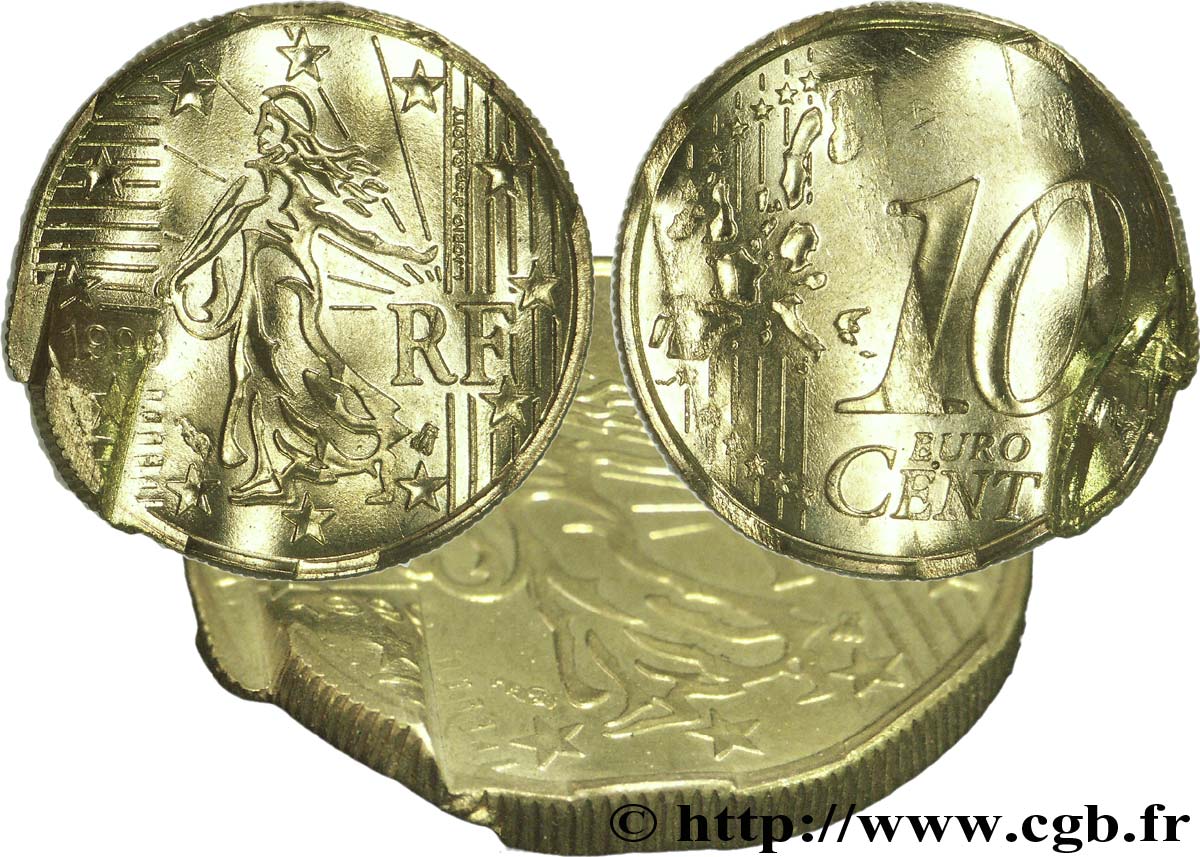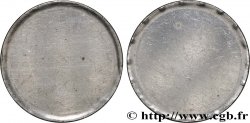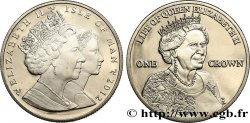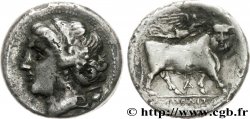v28_1909 - EUROPEAN CENTRAL BANK 10 centimes d’euro, premier type avec tranche aux cannelures fines 1999 Pessac
MONNAIES 28 (2007)
Prezzo di inizio : 150.00 €
Valutazione : 250.00 €
Prezzo realizzato : 305.00 €
Numero di offerte : 2
Offerta maxima : 336.00 €
Prezzo di inizio : 150.00 €
Valutazione : 250.00 €
Prezzo realizzato : 305.00 €
Numero di offerte : 2
Offerta maxima : 336.00 €
Tipo : 10 centimes d’euro, premier type avec tranche aux cannelures fines
Data: 1999
Nome della officina / città: Pessac
Quantità coniata : 447284613
Metallo : cuproalluminio 'nordico'
Diametro : 20,08 mm
Asse di coniazione : 12 h.
Peso : 4,13 g.
Orlo : cannelures fines
Grado di rarità : R2
Commenti sullo stato di conservazione:
Exemplaire techniquement splendide avec son brillant d’origine mais portant des traces de difformation
N° nelle opere di riferimento :
Diritto
Descrittivo diritto : La France sous les traits d’une Semeuse marchant à gauche et semant à contre-vent ; derrière le soleil levant ; traits horizontaux à gauche et verticaux à droite avec signature L. JORIO d’ap. O. ROTY ; à gauche de la France, le millésime.
Rovescio
Titolatura rovescio : 10/ EURO/ CENT.
Descrittivo rovescio : Carte de l’Union européenne sur six traits tirés entre deux groupes de six étoiles formant les douze pays de la zone euro, signature en monogramme LL.
Commento
Cet exemplaire fait partie du premier type prévu avec cannelures fines, modifié in extremis lorsque la décision a été prise par Bruxelles de mettre des cannelures larges. La production ayant déjà commencé - les délais sont, ne l’oublions pas, très serrés pour produire des milliards de pièces - tout ce qui avait été fabriqué avec cannelures fines a été détruit, difformé (ce qui explique les marques sur la pièce) et envoyé à la fonte. Quelques poignées de monnaies ont été récupérées chez l’acheteur du lot de métal à fondre et c’est tout ce qui subsiste du “10 cent France 1er type”. Cette monnaie a fait l’objet d’une ligne dans Euro 3, avant les 10 cent “normales” qui deviennent donc “Deuxième type”, car il s’agit d’une fabrication tout à fait officielle.
This example is part of the first type planned with fine fluting, modified in extremis when the decision was taken by Brussels to use wide fluting. Production having already begun - deadlines are, let's not forget, very tight to produce billions of coins - everything that had been manufactured with fine fluting was destroyed, deformed (which explains the marks on the coin) and sent to be melted down. A few handfuls of coins were recovered from the buyer of the batch of metal to be melted down and this is all that remains of the “10 cent France 1st type”. This coin was the subject of a line in Euro 3, before the “normal” 10 cents which therefore become “Second type”, because it is a completely official production
This example is part of the first type planned with fine fluting, modified in extremis when the decision was taken by Brussels to use wide fluting. Production having already begun - deadlines are, let's not forget, very tight to produce billions of coins - everything that had been manufactured with fine fluting was destroyed, deformed (which explains the marks on the coin) and sent to be melted down. A few handfuls of coins were recovered from the buyer of the batch of metal to be melted down and this is all that remains of the “10 cent France 1st type”. This coin was the subject of a line in Euro 3, before the “normal” 10 cents which therefore become “Second type”, because it is a completely official production








 Segnalare un errore
Segnalare un errore Stampate la pagina
Stampate la pagina Condividi mia selezione
Condividi mia selezione Fai una domanda
Fai una domanda Consegnare / vendere
Consegnare / vendere
 Descrittivo
Descrittivo















